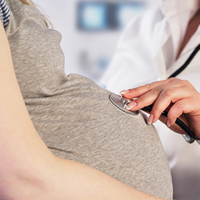Brain development and imaging
-

EEG data might help identify children at risk for social anxiety
Electroencephalography (EEG) is a non-invasive method to monitor the electrical activity of the brain. There are five main broad frequency bands in the EEG power spectrum: alpha, beta, gamma, delta and theta. Data suggest that EEG-derived delta–beta coupling — indicating related activity in the delta and beta frequency bands — might serve as a marker of emotion regulation.
Read more -

Progressive cortical thinning might identify children at risk of developing psychotic spectrum symptoms
Offspring of patients with schizophrenia or bipolar disorder have an increased risk of developing these conditions. However, our capacity to predict the long-term outcomes of these at-risk individuals is limited. Now, researchers have investigated whether longitudinal changes in brain structure differ in individuals at high familial risk who develop psychotic spectrum symptoms, compared to those who do not and to low-risk controls.
Read more -

Emotional abuse during childhood is linked with differences in brain structure
Delia Gheorghe and colleagues at the University of Oxford have harnessed data from the UK Biobank to delineate the relationship between adverse experiences and brain structure. The researchers accessed brain imaging data together with retrospective reports of childhood adversity and adulthood partner abuse from more than 6,000 adults (mean age, 62.1 years).
Read more -

Mothers’ prenatal BMI is linked with foetal brain connectivity
New data suggest that a high maternal prenatal body mass index (BMI) is associated with differences in functional connectivity in the foetal brain that might confer a risk of mental health and cognitive problems in childhood.
Read more -

Do brain function abnormalities lead to substance use, or vice versa?
New research has, for the first time, investigated the direction of links between brain function and substance use throughout adolescence. Jungmeen Kim-Spoon and colleagues studied 167 adolescents who were assessed annually for four years from 13-14 years old.
Read more -

Is brain circuitry linked with early symptoms of autism spectrum disorder?
Researchers in San Diego, USA, have studied the relationship between brain network connectivity and emerging autism spectrum disorder (ASD) symptoms in toddlers aged 17-45 months with (n=24) or without (n=23) ASD.
Read more -

What mechanisms underlie reduced social attention in people with ASD?
A key predictor of an autism spectrum disorder (ASD) diagnosis is attenuated attention to social stimuli.1 Thus far, the reasons underlying this abnormality are unknown: some have hypothesized reduced social motivation2 while others have suggested aberrant oculomotor function in affected individuals.3
Read more -

In Conversation… Assistant Professor Dr. Dienke Bos on Neuroimaging
Dr. Bos looks at the typical development of behavioural control and how this is represented naturally, magnetic resonance imaging to monitor brain changes in relation to childhood development, and where the evidence is that early intervention can slow or reverse damage. Includes transcription, and links.
Read more -

Coupled delta-beta wave activity might predict social anxiety in children
Researchers from McMaster University, Canada, have examined whether individual differences in salivary cortisol levels at baseline and parent-reported social anxiety levels are associated with resting, coupled delta–beta frontal wave activity.
Read more -

Working memory deficits may compromise cognitive flexibility in OCD
Obsessive compulsive disorder (OCD) is characterised by recurrent intrusive thoughts and/or behaviours. These traits imply deficits in cognitive flexibility in affected patients, but it is unclear at what stage of information processing these deficits might emerge. To address this question, Nicole Wolff and colleagues asked 25 adolescents with OCD and 25 matched healthy controls to complete a computer-based task switching paradigm.
Read more